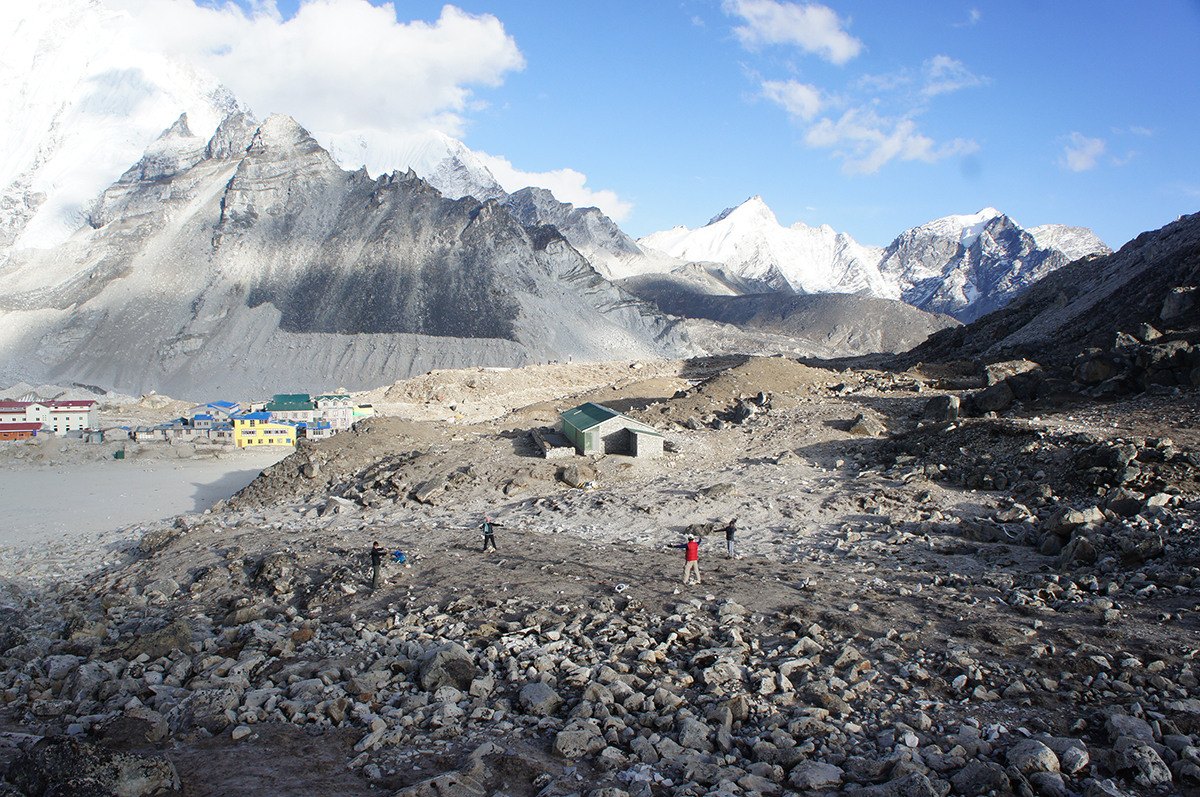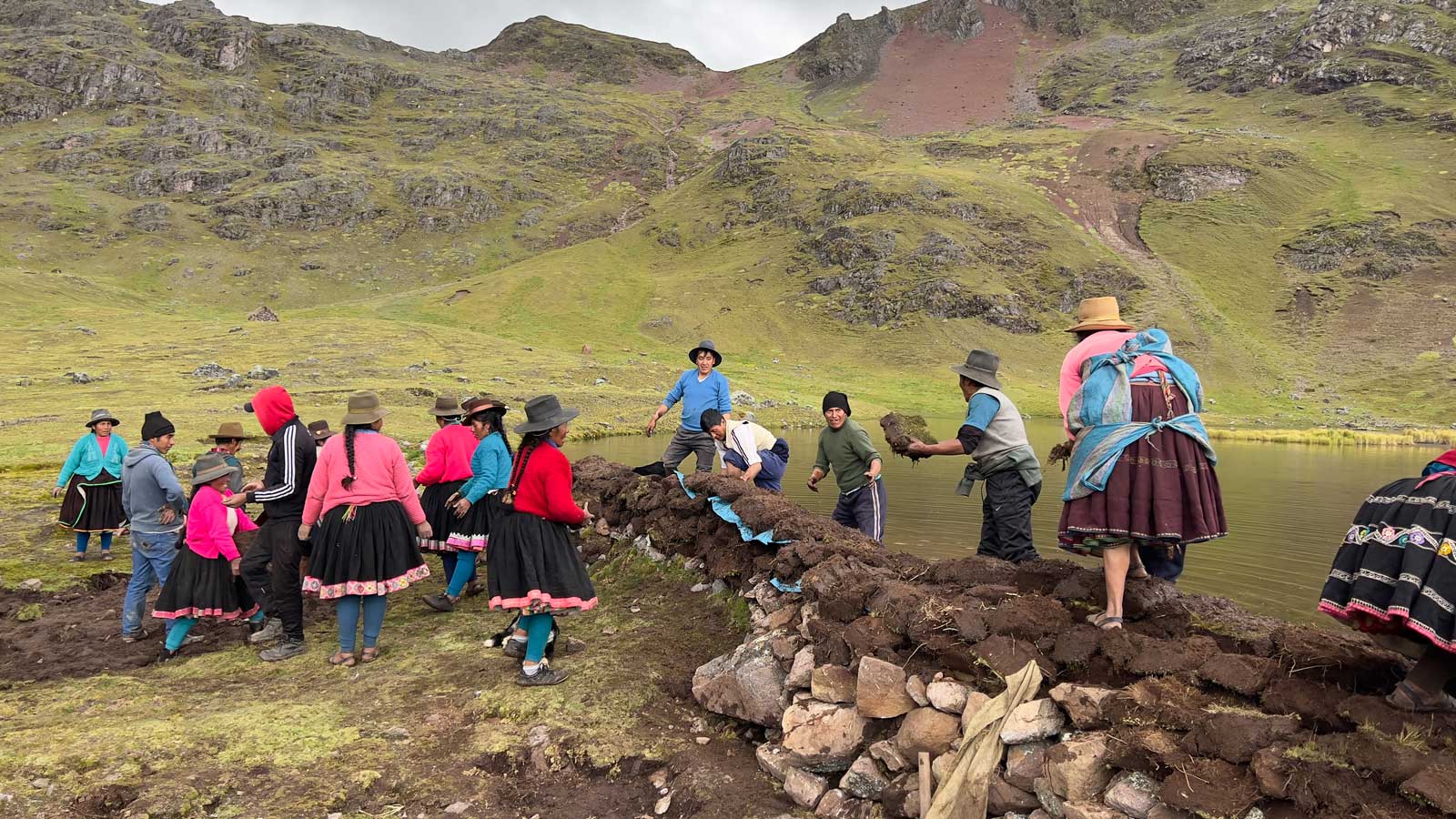 MOUNT EVEREST BIOGAS PROJECT (MEBP): Environmentally sustainable solution to the impact of human waste on Mt. Everest and beyond
MOUNT EVEREST BIOGAS PROJECT (MEBP): Environmentally sustainable solution to the impact of human waste on Mt. Everest and beyond
Project Status: 2009-2019
Location: United States
GOALS AND OBJECTIVES
Mount Everest Biogas Project (MEBP) is a volunteer-run, non-profit organization that has designed an environmentally sustainable solution to the impact of human waste on Mt. Everest and other high altitude locations. Mt. Everest boasts a massive climbing industry, with hundreds of climbers making the trip up the Khumbu Valley each year. This tourism, which has led to massive financial gain for the Nepalese, has also left a trail of human waste that has given way to environmental and public health concerns.
MEBP proposes to use an anaerobic biogas digester to treat the human waste, and outlines the project management solution to do so. The biogas digester will eliminate dumping of solid human waste at Gorak Shep and destroy pathogenic fecal coliforms that threaten the health of the local communities – lessening the impact of the tourism industry on a mountain that is sacred to the Nepalese. Initiated in 2010 in affiliation with Engineers without Borders and Architects without Borders, the MEBP system technology has been designed and tested and the team has brought the project to construction-ready. Groundbreaking is planned for Spring 2018 and an operational date slated for Winter 2019.
CONTRIBUTION TO MOUNTAIN PROTECTION
The MEBP promotes sustainable waste-management and disposal by creating an environmentally safe technology that will give Mt. Everest and other heavily-trafficked climbing regions a method for disposing of human waste.
Each year, thousands of climbers and support staff populate Everest Base Camp for several months during the climbing seasons, producing approximately 12,000 kg of solid human waste. In 1991, the Sagarmatha Pollution Control Committee (“SPCC”), was created with the responsibility for protecting the environment of Mt. Everest. Since then, SPCC has developed waste management strategies for the removal and disposal of human trash. However, there has been no viable solution of how to deal with human waste. The current practice is to pack it down to the nearest teahouse village of Gorak Shep from base camp in barrels and dump the waste into open pits, just above the flow of the Khumbu Glacier that feeds the lower valley. The untreated waste in these unlined pits poses a danger both to the environment and to the public health of the Sherpa people who live in the region.
The Mt. Everest Biogas Project will address this environmental and health hazard in a sustainable manner and serve as a model for other regions that must deal with similar waste problems at high-altitude, regardless if it is caused by climbers or local communities. .When implemented, MEBP will: eliminate the dumping of solid human waste at the teahouse village of Gorak Shep; reduce reliance on burning wood or yak dung for heating and the resultant respiratory and ocular health risks; reduce deforestation of the areas limited wood resources; and reduce risk of water contamination by fecal coliform. The system will convert waste into methane, a renewable natural gas, and a reduced pathogen effluent.
With funds raised through the MEBP, this project will build the first operating biogas digester in a cold climate. Once the biogas digester is established and running in the Khumbu valley, the design will be made available to the public so that other similar mountain climates in need of a sustainable waste management system can use this design in their own replications.
BENEFITS FOR LOCAL COMMUNITIES
MEBP provides a waste management solution for the local and climbing communities, but will bring many economic benefits to the local community, as well. MEBP will utilize a local construction company, local labor, and local materials to build the system. After the system is built, MEBP will directly employ and train two local operators for one year before entrusting management to SPCC, as outlined in a 2016 Memorandum of Understanding, the details of which will be discussed below. The operator jobs through SPCC will be permanent, year-round positions. Besides employment, there will be material benefits of the biogas system: the methane gas will be collected as fuel for cooking or lighting, and the treated effluent may be safely disposed of into the ground or potentially used as fertilizer in the Nepalese communities.
Possibly the most important long-term benefit of the MEBP is its ability to increase the Everest Region’s capacity for tourism in a sustainable way. Local leaders (Gorak Shep Teahouse Owners Association) expect the prototype biogas system will lead to others once it has been proven. The high-altitude biogas system will allow the region to bring in more trekkers and climbers without an increase in pollution or risk to water quality in the surrounding regions. In recent years, Mt. Everest has received international press about the pollution on the mountain – the biogas system would be an important step to restore the mountain to its pristine condition while allowing the climbing community to continue to admire its beauty.
All these benefits have been identified jointly with the MEBP team, its local liaison, Mingma Sherpa, local teahouse owners, and Khumbu Valley authorities. The team has made two trips to the site, once in May 2013 and again in May 2016, when they met with community groups across the region. Many project benefits were suggested by locals themselves, such as the effluent use as fertilizer and the project’s value as a prototype. The MEPB team is continually in contact with these groups as the design develops.
IMPLEMENTATION WITH LOCAL REGIONAL AND NATIONAL AUTHORITIES
Over the past six years, the Mt. Everest Biogas Project has been working with the following local and regional organizations in the legal, educational, leadership and tourism sectors (the project continues open dialogue with these organizations as part of the construction and long-term implementation strategy):
Sagarmatha Pollution Control Committee (SPCC)
Sagarmatha National Park Buffer Zone Management Committee (SNP BZMC)
Biogas Sector Partnership – Nepal (BSP)
Kathmandu University (KU)
Gorak Shep Teahouse Owners Association
Mount Everest Foundation for Sustainable Development (MEFSD)
BEYOND BUSINESS AS USUAL, BEYOND MOUNT EVEREST
“Business as usual” in regards to the issue of human waste on Everest means the continued dumping of human waste in open pits, leaving the local people to live with the results of this environmentally hazardous approach. MEBP goes beyond this as the first solution for processing waste on-site and producing economic benefits to the community while eliminating the growing environmental threats.
The solution to the Everest waste problem proposed by MEBP involves the integration of several technologies already ubiquitous in Nepal: small-scale biogas digesters with a shelter built on site, water storage, solar photovoltaic heating systems and, potentially, a greenhouse. There are more than 260,000 family-sized digesters in the country, a technology largely headed by BSP-Nepal, a local NGO that helps communities implement their own bio-digesters. MEBP would incorporate a proven, off-the-shelf BSP biogas digester model. All building materials and equipment will be selected only if they can be sourced in Nepal, and are low technology with ruggedized components.
MEBP will not only change the way waste is disposed of, but will introduce new building techniques to the local builders to make them energy-efficient and seismically safe. While the shelter will be constructed of traditional stone masonry, MEBP has incorporated rigid foam insulation below the foundation and in the cavities of walls and roof to retain the digester heat. Masonry combined with insulation is not a standard practice in Nepal, despite the cold climates. Additionally, the shelter will include a new earthquake-resisting technique called “gabion banding,” which reinforces traditional stone construction with horizontal wire mesh bands that strategically hold the building together when it experiences shaking forces. These new building techniques look to incrementally build on “business as usual” to create safer and more sustainable building practices.
It is the intent of MEBP to go beyond “business as usual” not only at the Mount Everest base camp, but any region in need of a waste-management solution. The design implemented for Gorak Shep can be replicated elsewhere and all engineering and architectural design material will be open source for others to use. Once successfully proven at Gorak Shep, hundreds of other locations can adopt the concept and adapt the technical plans for high-altitude biogas digesters that might help reduce pollution, deforestation, and risks to public health.
STEWARDSHIP AND VOLUNTEER OPPORTUNITIES
Good stewardship and local participation are key to the success of the Mount Everest Biogas Project. The biogas system will be owned and operated by the local Nepalese organizations described above, namely SPCC, SNP BZMC, and the Gorak Shep Teahouse Owners Association. SPCC and SNP BZMC are organizations already dedicated to the stewardship of Mt Everest National Park, and the teahouse owners are very enthusiastic about the potential of eliminating this environmental hazard that is impacting their local community and considered disrespectful to their sacred mountain. The local community also understands the economic benefit of free methane for cooking and lighting, as well as the project’s providing fertilizer for crops. These smaller benefits can help the Gorak Shep community become more deeply invested in the sustainability of the project.
In addition, the Mount Everest Biogas Project gives valuable jobs to the local Sherpa community. Local employment during construction, and long-term employment for system operation would employ an estimated fifteen workers for a year in construction and two system operators year-round permanently. Currently, Sherpas are employed to carry the waste from Everest Base Camp to the pits at Gorak Shep, another practice which would not be changed for implementation of this project. Using outside volunteers for these tasks as not practical, as it would remove those employment benefits from the local people.
However, once operational, the Mount Everest Biogas Project could become a source of worldwide interest. MEBP provides volunteer opportunities for teams to understand and improve the performance of the biogas system, to study the system and to adapt the model to meet the needs of the Gorak Shep environment. This lends volunteer opportunities for both local community and US-based engineers, architects, builders, scientists, and other technical experts to contribute their expertise in construction support, technical support or operating support throughout the length of this project. When the design is released, more opportunities will open for similar groups to take on the task at sites around the world. Most importantly, the Mount Everest Biogas Project will give the Sagarmatha Pollution Control Committee and the Sagarmatha National Park Buffer Zone Management Committee, which are largely staffed by volunteers, a new means of achieving their environmental mission while protecting the raw beauty of a sacred mountain central to the culture of their people.
PROJECT MANAGEMENT
The MEBP team consists of highly skilled volunteer engineers, scientists, architects, climbers and construction professionals based out of Seattle, Washington USA. The project management team has over 30 years of experience implementing projects in the United States and Europe, and the Board of Directors bring additional expertise to the climbing, construction and scientific communities. This team has spent seven years on the design solution that will meet the requirements to operate a biogas digester system in the harsh environment.
In addition, the team above has worked with Nepalese engineers and contractors to validate the unique local conditions that may affect the cost and operation of this project. Implementation of this project consists of three phases, described below:
Phase 1 – Construction and Installation: The MEBP will raise funds for and has overall responsibility throughout this phase. The MEBP team has hired a local resident of Nepal to oversee construction of the project (the “project manager”). The project manager will work closely with the contractors and other MEBP team members to ensure questions are answered quickly, bills are paid timely and the final construction meets the requirements of the drawings and specifications. A local general contractor will be hired by MEBP to build the biogas system, which consists of the biogas digester, the shelter over the digester and the heating system consisting of solar and battery arrays. During the construction and installation phase, BSP-Nepal has agreed to act as an on-site consultant for the biogas digester. Beginning with the first site survey in 2013, MEBP has been acquiring cost inputs from potential Nepalese contractors along with MEBP’s in house cost estimates as the design evolved. The current cost estimate for construction of the biogas system is approximately $360,000 USD. MEBP is currently updating these cost estimates as part of the fundraising effort that is underway.
Phase 2 – Testing and Evaluation: The MEBP will raise funds for and has overall responsibility throughout this phase. Testing and Evaluation of the biogas digester will be performed for a period up to one year after the digester is operational during which period a volunteer member of the MEBP team will live at Gorak Shep and oversee operation of the digester. During this phase, a minimum of two members of the Gorak Shep community will receive training on the operation of the biogas system. The MEBP team in conjunction with BSP will provide all training equipment and manuals.
Phase 3 – Long Term Operation: At this time, financial responsibility for the long term operation of the biogas system will belong to SPCC. To ensure proper system support, a consulting team consisting of BSP-Nepal, SPCC, Seattle University, Kathmandu University and the MEBP team will provide technical and operational aid to the Gorak Shep biogas system operators.
CONTACT
Tana Rill
tana.rill@yahoo.com
http://mteverestbiogasproject.org



